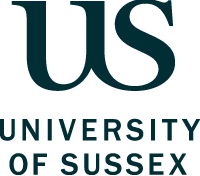Dr M Puttock-Brown
No more applications being accepted
Funded PhD Project (Students Worldwide)
About the Project
Background
The modern gas turbine engine is an integral part of society, whether for flight or power generation. With the rapid growth in the aviation sector and the increasing demand to reduce CO2 emissions a more fundamental understanding of the flow structure inside the engine’s secondary air system is required. This air system is vital for the functioning of a gas turbine and is required for purging, sealing and cooling of components throughout. In the compressor rotors this involves the calculation of buoyancy-induced rotating flow and heat transfer. Such flows are three-dimensional, unsteady and unstable, requiring extremely difficult and expensive computations, even on the most powerful computers. Conversely engine design require computational models that run in minutes, and so the flow and heat transfer inside rotating cavities are modelled – through necessity - using 1D advection networks, empirical correlations and scaling laws. To meet the challenges of engine design and modelling and maintain rapid design iterations a new approach is needed.
Research Contributions
This research will focus on the detailed analysis of existing high-quality experimental data from an already world-leading research rig operating at close to engine conditions. The scientific merit lies in the use of experimental data to substantiate future engine design work through the replacement of 1D advection networks in 2D thermo-mechanical design models for gas turbine engines. It will address the difficulties of modelling buoyancy-induced flow at engine like conditions, and model both the thermal transients of the engine - operating over many minutes - with the flow structure which operates on the micro-second time scale.
Research Environment
The successful candidate will be joining the Thermo Fluid Mechanics Research Centre (TFMRC) in the Department of Engineering and Design. Enabling access to world-leading facilities in the study of gas turbine secondary air systems, in particular the Multiple Cavity Rig (MCR) and existing experimental results. The TFMRC has a strong heritage as a globally leading centre in the study of rotating cavities over several decades.
Qualifications and Skills
Candidates from engineering and physics degrees are encouraged to apply, with particular interest in candidates having a fluid mechanics and gas turbine technology background. MSc and/or publications in related areas are an advantage. Experience in rotating and/or buoyancy-induced flow is desirable.
How to apply
Apply for an Engineering PhD for September 2018 using this step by step guide: http://www.sussex.ac.uk/study/phd/apply
In the ’Finance information’ section of the application form clearly state you are applying for the “Computational Model of Buoyancy-Induced flow in Rotating Cavities."
Sponsors
Research webpages: http://www.sussex.ac.uk/engineering/research
http://www.sussex.ac.uk/tfmrc/
Contact us
For informal enquiries about the project contact Dr Mark Puttock-Brown, Lecturer in Mechanical Engineering: http://www.sussex.ac.uk/profiles/218138
For general enquiries contact: [Email Address Removed]
Funding Notes
The studentship will include a three year stipend at a standard rate (currently £14,777 per annum) and, in addition, fees at the UK/EU rate. Since the studentship only covers fees at the UK/EU rate, overseas applicants are kindly requested to state in their application how they propose to cover the difference between the UK/EU rate and the overseas fees (for more details visit: http://www.sussex.ac.uk/study/phd/fees-and-scholarships).

 Continue with Facebook
Continue with Facebook

